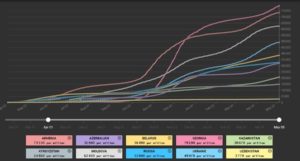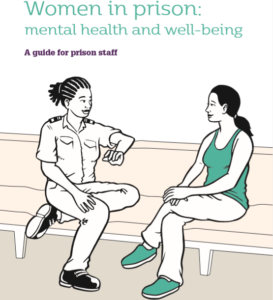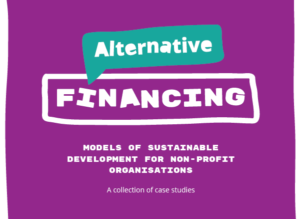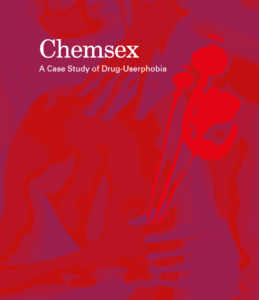AFEW International prepares regular updates on the COVID-19 developments in multiple countries in the EECA region.
You can now find all the updates in the COVID Corner on our website.
As of 06.05.2021
Regional overview
The number of coronavirus cases per population ratio since the start of the active phase of the pandemic (April 1 2020) in the EECA region
Source: Sciences Po Media lab Coronavirus Country Comparator
COVID-19 situation report EECA
The following number of COVID-19 cases were registered in Russia – 4,792,000, Ukraine – 2,146,000, Kazakhstan – 388,100, Belarus – 363,700, Azerbaijan – 323,800, Georgia – 315,900, Moldova – 251,800, Armenia – 217,900, Kyrgyzstan – 96,960, Uzbekistan – 92,720, Tajikistan – 13,310, Turkmenistan – ?.
Situation report Armenia
| Location | Confirmed | Recovered | Deaths |
| 217,900 | 202,273 | 4,192 |
Cases of COVID-19
— The third wave of coronavirus (COVID-19) in Armenia is showing some signs of stabilization, Caretaker Prime Minister Nikol Pashinyan said at the Cabinet meeting on May 6.
Measures to contain the epidemic
— The quarantine in Armenia declared on January 11 is still in place till July 11, 5 p.m.
Vaccine
— The vaccination campaign, which began on April 13, got off to a slow start.
— A mobile vaccination unit was doing the rounds in central Yerevan on May 5, Civilnet reported.
— Fifty-six percent of Armenians will not seek a vaccine, CivilNet reported on April 19, citing a survey conducted by the Caucasus Research Resource Center.
— Health Minister Anahit Avanesyan announced on April 14 that the government had negotiated to receive 1 million Sputnik V doses from Russia, Interfax reported. She did not say when they would arrive, though she said she hopes to vaccinate 20 percent of the population by the end of the year.
— 100,000 doses of Sinovac are on their way from China, state media reported on April 30.
Situation report Azerbaijan
| Location | Confirmed | Recovered | Deaths |
| 323,800 | 298,949 | 4,617 |
Cases of COVID-19
— The biggest number of coronavirus-infected cases in Azerbaijan fell on the capital (Baku city) – 54.2 percent, according to www.koronavirusinfo.az. The Absheron district (12.9 percent) ranked second, districts of the country’s Aran zone ranked third (12 percent), the Ganja-Gazakh zone (7.3 percent) ranked fourth followed by the Lankaran district (4.2 percent), the Shaki-Zagatala zone (3.1 percent), Guba-Khachmaz (3 percent), Mountain Shirvan zone (2.4 percent).
Measures to contain the epidemic
—The special quarantine regime will remain in effect at least until June 1, 2021. Restaurants and cafes opened on February 1, 2021, and most other business and services are open, except shopping malls. From April 5, 2021, educational institutions in Baku, Sumgayit, Ganja, Sheki, and the Absheron district switched to distance learning. Masks are mandatory in all public places (both inside and outside), subject to fines.
Vaccine
—The first 40,000 doses of Sputnik V arrived from Russia on May 2. Baku has requested 300,000 doses.
— Azerbaijan began distributing the AstraZeneca vaccine on May 3 to people over age 60, state media reported on April 30. The country has received 84,000 doses through the COVAX program.
Situation report Belarus
| Location | Confirmed | Recovered | Deaths |
| 363,700 | 354,212 | 2,592 |
Measures to contain the epidemic
— The Healthcare Ministry’s anti-coronavirus recommendations remain the same – social distancing, limiting face-to-face contact, avoiding crowds, wearing masks.
Vaccine
— As of early May 2021, more than 400,000 people signed up in healthcare organizations of the country to get a vaccine against the coronavirus, said Irina Glinskaya, the deputy chief physician of the National Center for Hygiene, Epidemiology and Public Health.
— According to Irina Glinskaya, more than 296,000 people in Belarus have received the first shot of the vaccine against the coronavirus and more than 137,000 are now fully vaccinated.
Situation report Georgia
| Location | Confirmed | Recovered | Deaths |
| 315,900 | 297,676 | 4,227 |
Measures to contain the epidemic
— Georgia is considering cancelling curfew for the vaccinated to encourage uptake, RFE/RL reported on April 28.
— May 4-11 have been declared public holidays in Georgia.
— From May 3 through May 12, municipal transport will be suspended throughout Georgia. This restriction does not apply to intercity transport. Cemetery visits will be restricted through the upcoming holidays, with roads to cemeteries blocked.
— As an exception, the current 9 PM-5 AM curfew will be eased just for one night, namely to apply from 11 PM, May 1 to 4 AM, May 2, in light of the upcoming Easter Liturgy.
— Georgia began its vaccine campaign on March 15 with 43,200 doses of AstraZeneca sourced through Covax. Another 29,250 doses of the Pfizer vaccine, also through Covax, arrived on March 25.
— Georgia began using the Sinopharm vaccine on May 4.
— Deputy Health Minister Tamar Gabunia said on May 5 that she expects Georgia to reach herd immunity by the end of 2021, when she believes 60 percent of adults will be vaccinated. She also said that she expects the number of COVID-19 cases to peak in mid-May.
— Vaccine reluctance is widespread, especially after a nurse died shortly after she received her first jab on television on March 18. Georgians were broadly hesitant even before the tragedy. One recent survey conducted prior to the nurse’s death showed that over a half of Georgians were reluctant to get the jab.
— The first 6,500 doses of Sputnik V arrived in the Russian protectorate of Abkhazia on April 30, Ekho Kavkaza reported. Vaccination will begin after the May 1-7 holidays.
Situation report Republic of Moldova
| Location | Confirmed | Recovered | Deaths |
| 251,800 | 241,912 | 5,892 |
Measures to contain the epidemic
— On March 21, authorities in Moldova have issued orders extending the country’s existing nationwide state of public health emergency and associated measures, as well as imposing a number of new restrictions through at least May 30.
— In “red code” areas where infection rates are high, individuals are allowed to leave their homes only for essential purposes.
Education
— Schools, with the exception of kindergartens, are operating on a distance-learning basis until at least May 30.
Vaccine
— According to the government portal on vaccination (https://vaccinare.gov.md/) as of April 26th, a total of 120,254 doses of vaccine were administered (11,494 people received 2 doses).
— The MoHLSP published its 4th survey on behavioral options on COVID-19 and vaccination in Moldova. The survey, among other indicators, shows a substantial increase in the population that accepts vaccination- 41%, compared to 31% in previous surveys.
— As a result of vaccination, the infection rate among medical staff registered a significant reduction – 82.5%. Thus, currently, the infection rate among medical personnel (% from the total of all infection cases) is 3% compared to 12% before the vaccination started.
— The COVID-19 Vaccine Market Dashboard (hosted by UNICEF) informs the following numbers on vaccines for Moldova as of April 26: doses shipped via COVAX- 86,970, doses allocated through May 2021- 233,190.
— The Russian Federation announced a donation of 182,000 doses of Sputnik-V vaccine to Moldova, including 62,000 for Transnistria region. The first batch of 71,000 doses arrived in Chisinau on April 24th, with the next batch to be dispatched in May 2021.
| Location | Confirmed | Recovered | Deaths |
| 2,146,000 | 1,711,709 | 45,451 |
COVID-19 cases
— In April 2012, Kyiv recorded some of the highest numbers of new infections among Ukrainian regions, but new cases dropped significantly last week.
— Three regions in Ukraine remain in the “red” zone of the COVID-19 quarantine, Ukrinform reports with reference to data published on the Ukrainian Ministry of Health’s website. As of May 6, Zaporizhzhia, Poltava, and Sumy regions are in the “red” zone.
— The “yellow” zone includes Kyiv city, Vinnytsia, Dnipropetrovsk, Zakarpattia, Ivano-Frankivsk, Kyiv, Lviv, Mykolaiv, Odesa, Rivne, Kherson, Chernivtsi, Kharkiv, Khmelnytskyi, and Chernihiv. Other regions are in the “orange” zone.
— As of May 5, the COVID-19-associated hospitalization rates (60 per 100,000 people) in the regions were not exceeded.
— As of May 5, the COVID-19-associated hospitalization rate in Kyiv city was 35.3. The rate for oxygen-supplied beds in Kyiv was 44.6% (with the established capacity set at 65%).
— According to the Ministry of Health, no region exceeded the rates for oxygen-supplied beds as of May 5.
— The Cabinet of Ministers approved a resolution on the extension of adaptive quarantine in Ukraine until June 30, with four levels of epidemic danger.
Measures to contain the epidemic
— Ukraine’s capital Kyiv on May 1 eased tough restrictions imposed last month to prevent the rapid spread of the new coronavirus.
— In early April, Kyiv limited its public transport services, closed schools and kindergartens, theatres and shopping centres, and banned spectators from sporting events.
— Since May 1, the capital allows the operation of transport, cafes and restaurants, although passenger and customer numbers will be restricted. Wearing masks is still mandatory in transport and public places.
— Shopping malls and sports clubs reopened on May 1, while schools and kindergartens could open again on May 5.
Vaccine
— On May 4, 3,425 people in Ukraine received one dose of the COVID-19 vaccine, according to data published on the Ministry of Health’s portal “Vaccination against COVID-19”. Of whom, people vaccinated with their first dose – 3,412, fully vaccinated people (received two doses) – 13. In total, 759,735 people have been vaccinated since the beginning of the vaccination campaign. In particular, people vaccinated with their first dose – 759,432, fully vaccinated people (received two doses) – 303.
— On May 4, the highest number of people were vaccinated in the Dnipropetrovsk region – 879. No vaccinations were conducted in Lviv and Khmelnytskyi regions on May 4. In Kyiv city, 57 people were vaccinated yesterday.
— Ukraine began vaccinating the population against coronavirus on February 24.
Situation report Russia
| Location | Confirmed | Recovered | Deaths |
| 4,792,000 | 4,472,338 | 112,246 |
COVID-19 cases
— Moscow authorities on April 29 confirmed 3,215 new coronavirus infections — a 74% increase and the highest number of infections in Russia’s capital reported in a single day since January.
— 255 people in Russia have been found to have a more contagious U.K. strain of the coronavirus, state-run TASS news agency reported on April 23, citing Rospotrebnazor head Anna Popova. Another 25 patients were confirmed to have the South African variant of the virus. The mutations were discovered in more than 50 Russian regions.
Measures to contain the epidemic
— President Vladimir Putin introduced on April 23 a non-working period over May 1-11 to prevent a surge in coronavirus infections.
— All Russian schools will remain closed during a countrywide non-working period over May 1-11, state-run TASS news agency reported on 27, citing Russia’s Ministry of Education.
Vaccine
— On April 30. the European Medicines Agency (EMA) has completed a special investigation into how Russia conducted clinical trials for its Sputnik V vaccine as part of the jab’s application for approval in the EU.
— Russia has vaccinated 11.9 million people, or around 10% of its adult population, with the first dose of one of its three homemade coronavirus vaccines, Deputy Prime Minister Tatiana Golikova said on April 29.
Situation report Kazakhstan
| Location | Confirmed | Recovered | Deaths |
| 388,100 | 288,187 | 3,833 |
Cases of COVID-19
— There are currently nine regions in the high-risk red zone – the cities of Nur-Sultan, Almaty, and Shymkent as well as Akmola, West Kazakhstan, Zhambyl, Karaganda, Kyzylorda, and Pavlodar regions. Last week, the Pavlodar and Zhambyl regions moved into the red zone.
— Five regions are in the medium-risk yellow zone – the Aktobe, Atyrau, East Kazakhstan, Almaty, and Mangystau regions.
— The Kostanay, Turkistan, and North Kazakhstan regions remain in the green zone.
— Over the past week, the morbidity rate decreased by two percent, while the mortality rate has remained the same.
— The occupancy of infectious disease beds in the country remains at 42 percent, and 28 percent are in intensive care units. Nur-Sultan and Almaty are leading in terms of occupancy rates with 60 percent and 57 percent, respectively.
Vaccine
— Nearly 1.5 million people have received at least one dose of vaccine against COVID-19 in Kazakhstan as of May 4, said Kazakh Minister of Healthcare Alexey Tsoy at a May 4 government meeting.
— As of May 5, 1,422,204 people have received at least one dose of vaccine, and 347,474 have been fully immunized against the virus since the mass vaccination campaign kicked off on February 1.
— Kazakhstan has so far administered 1.8 million vaccine doses.
— Three vaccines are currently available in Kazakhstan – Russia’s Sputnik V produced at the Karaganda-based pharmaceutical plant, the locally developed inactivated QazVac vaccine, and the Hayat-Vax produced in the United Arab Emirates.
Situation report Kyrgyzstan
|
||||||||
Cases of COVID-19
— COVID-19 infections are increasing in Kyrgyzstan, with 333 new infections reported on average each day.
Measures to contain the epidemic
— Mask regime remains in force.
— No quarantine will be imposed in Kyrgyzstan yet, said Health and Social Development Minister Alymkadyr Beishenaliyev on April 16.
Vaccine
— Kyrgyzstan began its vaccination campaign on March 29 with 150,000 doses of the Sinopharm vaccine donated by China. Initial interest was low, but enthusiasm picked up when the Russian Sputnik V jab became available on April 23 to people age 65 and older. A batch of 20,000 doses arrived on April 22.
— The AstraZeneca vaccine is expected in May. First Deputy Prime Minister Artem Novikov told parliament on April 28 that 40,000 doses of Sputnik V will also arrive in May. The country hopes to vaccinate at-risk populations by the autumn.
— A survey by the Health Ministry with the support of the WHO found 55 percent of the population is willing to be vaccinated.
— Kyrgyzstan has administered at least 27,858 doses of COVID vaccines so far. Assuming every person needs 2 doses, that’s enough to have vaccinated about 0.2% of the country’s population.
~
Interesting reads
— Euroactiv: Kazakhstan launches QazVac, its own COVID-19 vaccine read.
— Eurasianet: Dashboard: Vaccinating Eurasia – May read.




